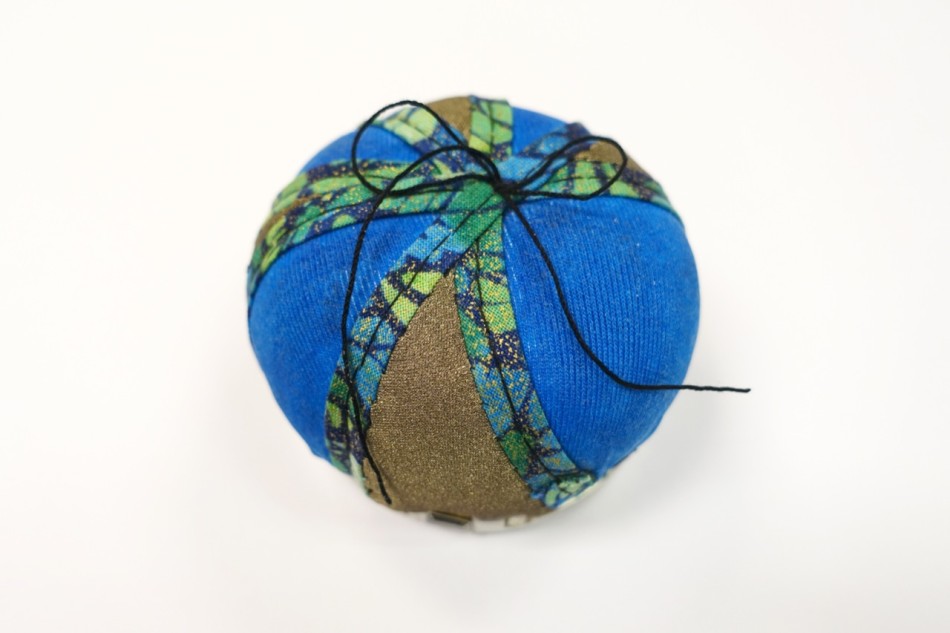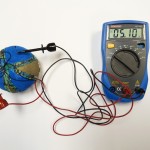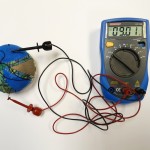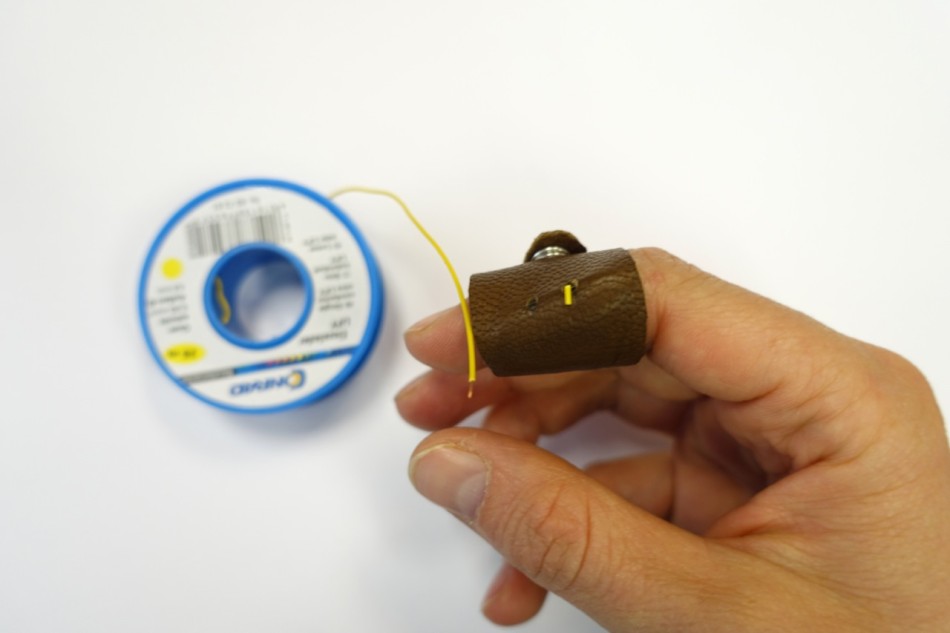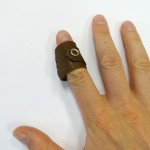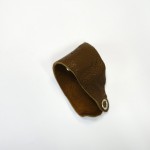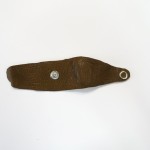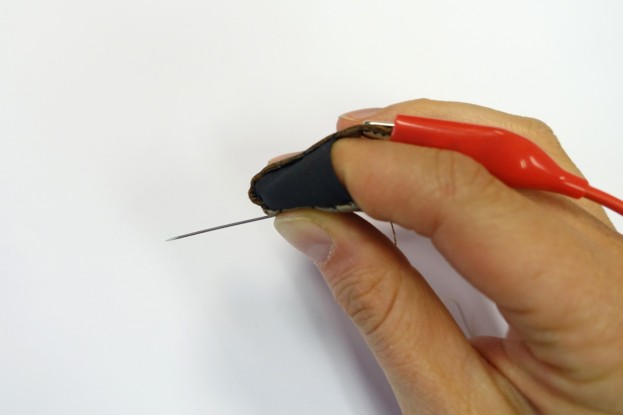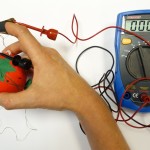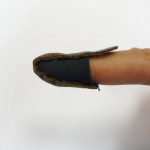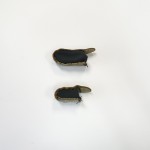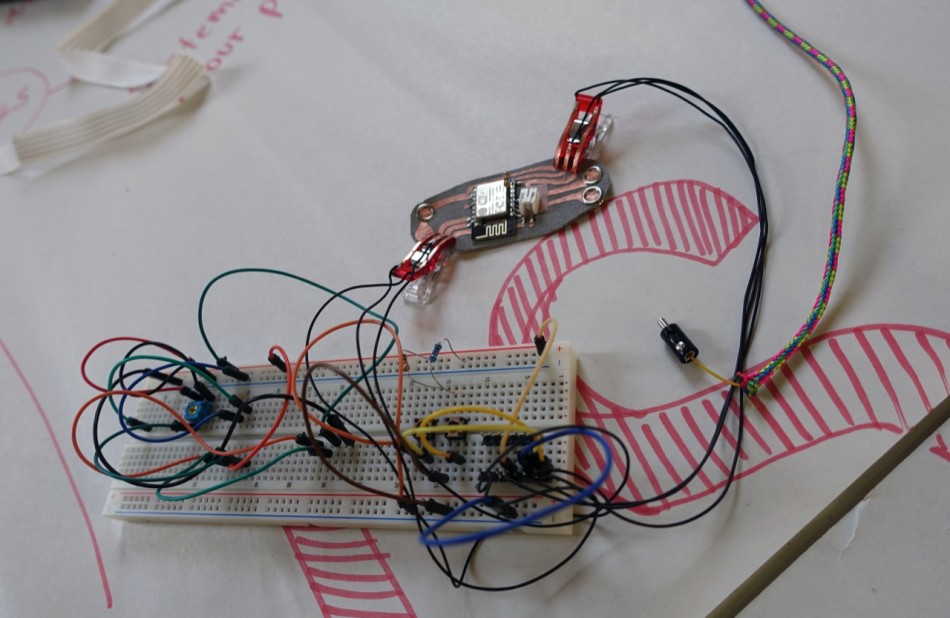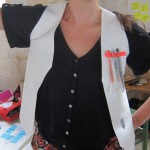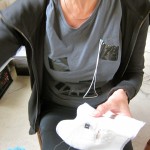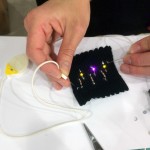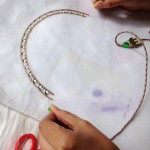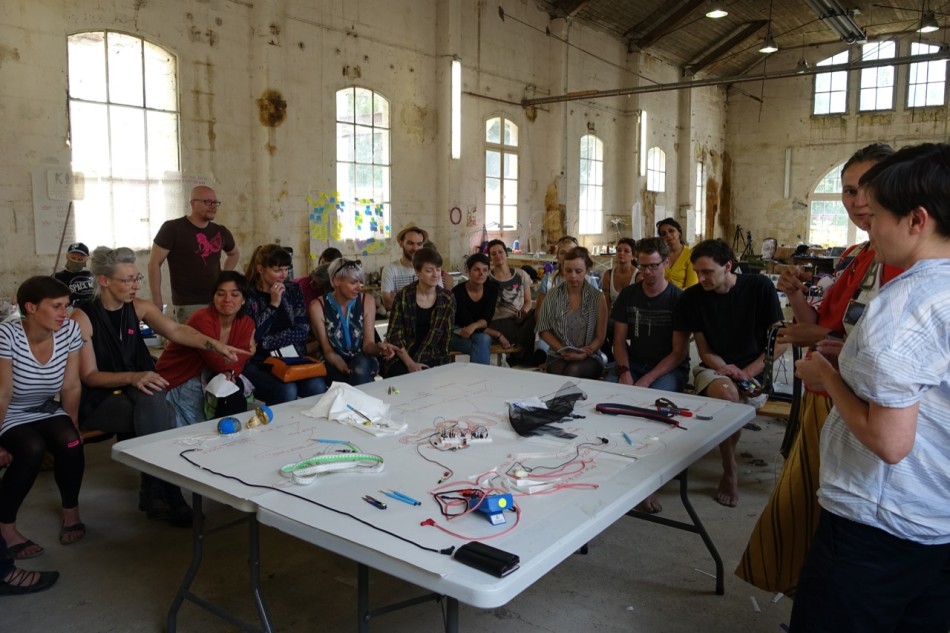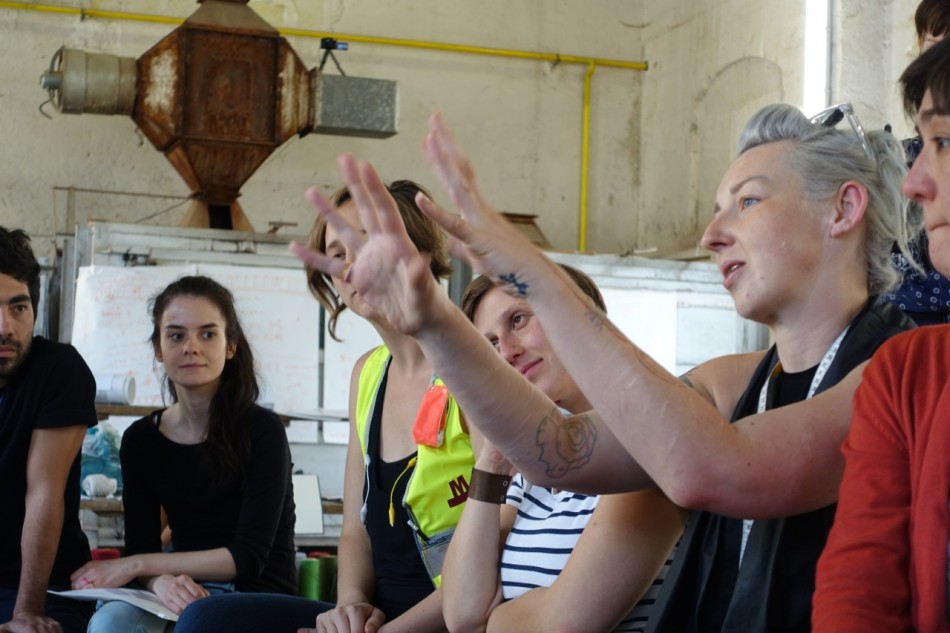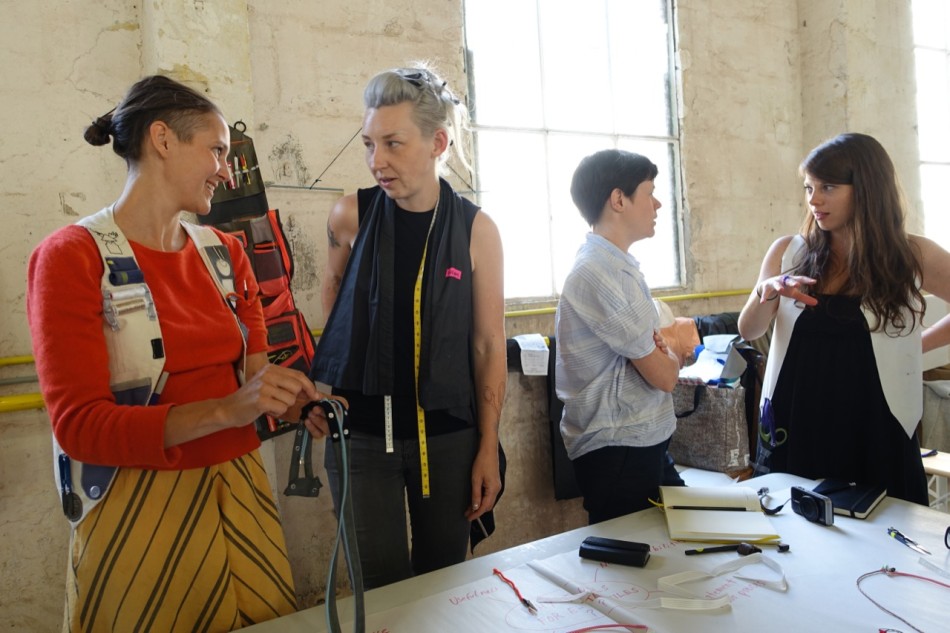What kinds of specialized tools could E-Textile practitioners use? Being an interdisciplinary trade, many tools of our trade come from either electrical engineering or textile practices. Can we imagine and build unique tools that would fulfill needs unique to the practice of E-Textiles?
How would and could these tools look like? And would tools that better fit the practice advance creation within the practice?
These questions were the starting point of experimenting sessions and the production of prototypes. They are targeted at identifying necessities and possibilities in the field and pondering potential answers towards them. Diverse aesthetic, functional, material and interactive qualities are explored, tested and discussed.
Focus Group @ eTextile Summercamp 2015
Hannah Perner-Wilson, Irene Posch, Shih Wei Chieh
Extended group: Kate Hartman, Rachel Freire
Building upon Connected Research: Kobakant and Stitiching Worlds, Tools We Want

Photo by Hannah Perner-Wilson, some rights reserved

Prototyping a a tool for shaping a resistor with direct resistance value feedback. Continuous feedback about the resistance value while shaping the resistive material, would allow resistors in diverse designs to be created instead of being limited to currently available hardware parts and standardized forms. It could broaden the spectrum of materials and forms used in electronic textile creations.

Photo by Hannah Perner-Wilson, some rights reserved
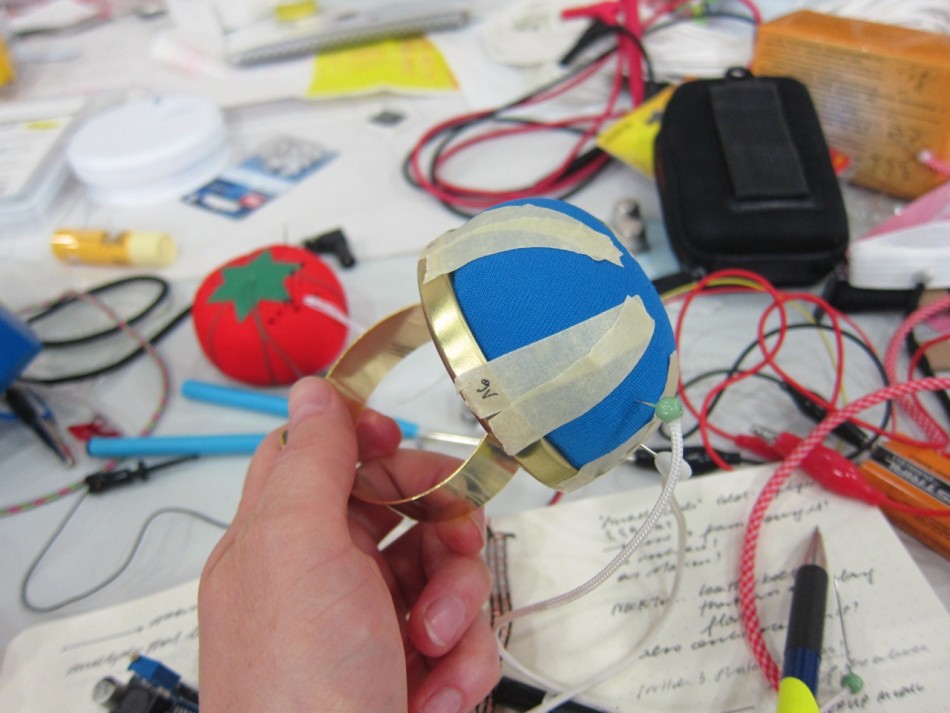
Sketching for a voltage supply pin cushion. Needle pins can connect different supply voltages to an eTextile project. The voltage supply itself is small, without cables and can be carried around the wrist for a hands-free quick testing of the current project, or component.
Pincushion Voltage Supply
The blue areas connect to ground, the gray areas connect to different voltages that are commonly used in electronic textile projects: 3.5 V, 5V, 9V, 12V. The Pincushion Voltage Supply is USB-chargeable, and can be turned off when not in use and also be used as standard pin cushion.
Finger-mount Wire Stripper
A Finger-mount Leather Wire Stripper for seamless integration of wire stripping into the textile working process. The Wire Stripper can easily be taken on and off or also stay on the finger without hindering the crafting process. The current prototype includes two options to strip wires of different thickness.
Connectable Thimble
The Connectable Thimble protects the finger when pushing a needle through thick material, is can additionally be used to test conductivity of other electronic functions when being connected through the flap. Touching a needle with the silver area extends the needle to become an electronic probe. Conductive areas and materials to connect to can be directly identified during the process of sewing.
It can also directly be used to make the finger become a touching probe.
Connect-a-Clip
Wonder Clips converted to become connectors to electronic textile projects. The connect firmly but gently to textile material. The size allows for diverse ways to connect: having multiple connections through one clip or just one, using it as possible replacement for the often used crocodile clips.

Photo by Hannah Perner-Wilson, some rights reserved

Photo by Hannah Perner-Wilson, some rights reserved
Toolvest
Wearable Tools

Photo by Hannah Perner-Wilson, some rights reserved
Fashionable Tools
Can tools become fashionable accessories? Objects that do have a valuable function for people skilled in specific trades, but are also desirable for their visual appearance?
 Rachel Freires explorations of aesthetic aspects of tools, prototyping kits as fashionable accessories.
Rachel Freires explorations of aesthetic aspects of tools, prototyping kits as fashionable accessories.
eTextile Tester – Use Cases
The eTextile Tester is part of the 2015 eTextile Swatchbook. Participants of the summercamp have been asked to use the Tester Tool, if applicable in their work, and give feedback on its usability and functionality.

Photo by Hannah Perner-Wilson, some rights reserved
Presentation and Discussion
Hannah Perner-Wilson, Irene Posch
Presenting and discussing motivations and outcomes of the week long focus group work.
